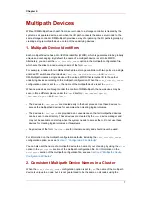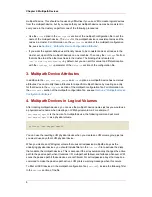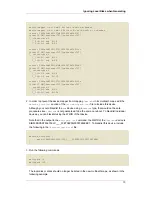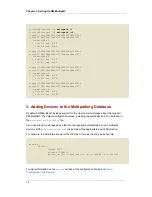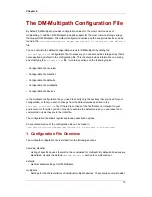
Device Mapper Multipathing
Device Mapper Multipathing (DM-Multipath) allows you to configure multiple I/O paths between
server nodes and storage arrays into a single device. These I/O paths are physical SAN
connections that can include separate cables, switches, and controllers. Multipathing
aggregates the I/O paths, creating a new device that consists of the aggregated paths.
1. Overview of DM-Multipath
DM-Multipath can be used to provide:
• Redundancy
DM-Multipath can provide failover in an active/passive configuration. In an active/passive
configuration, only half the paths are used at any time for I/O. If any element of an I/O path
(the cable, switch, or controller) fails, DM-Multipath switches to an alternate path.
• Improved Performance
DM-Multipath can be configured in active/active mode, where I/O is spread over the paths in a
round-robin fashion. In some configurations, DM-Multipath can detect loading on the I/O
paths and dynamically re-balance the load.
Figure 1.1, “Active/Passive Multipath Configuration with One RAID Device”
shows an
active/passive configuration with two I/O paths from the server to a RAID device. There are 2
HBAs on the server, 2 SAN switches, and 2 RAID controllers.
Chapter 1.
1
Summary of Contents for DEVICE-MAPPER MULTIPATH 4.6
Page 4: ...Using Device Mapper Multipath ...
Page 6: ...vi ...
Page 16: ...6 ...
Page 19: ...filter r disk r sd a Multipath Devices in Logical Volumes 9 ...
Page 20: ...10 ...
Page 35: ... path_checker tur rr_weight priorities Configuration File Devices 25 ...
Page 36: ...26 ...

















